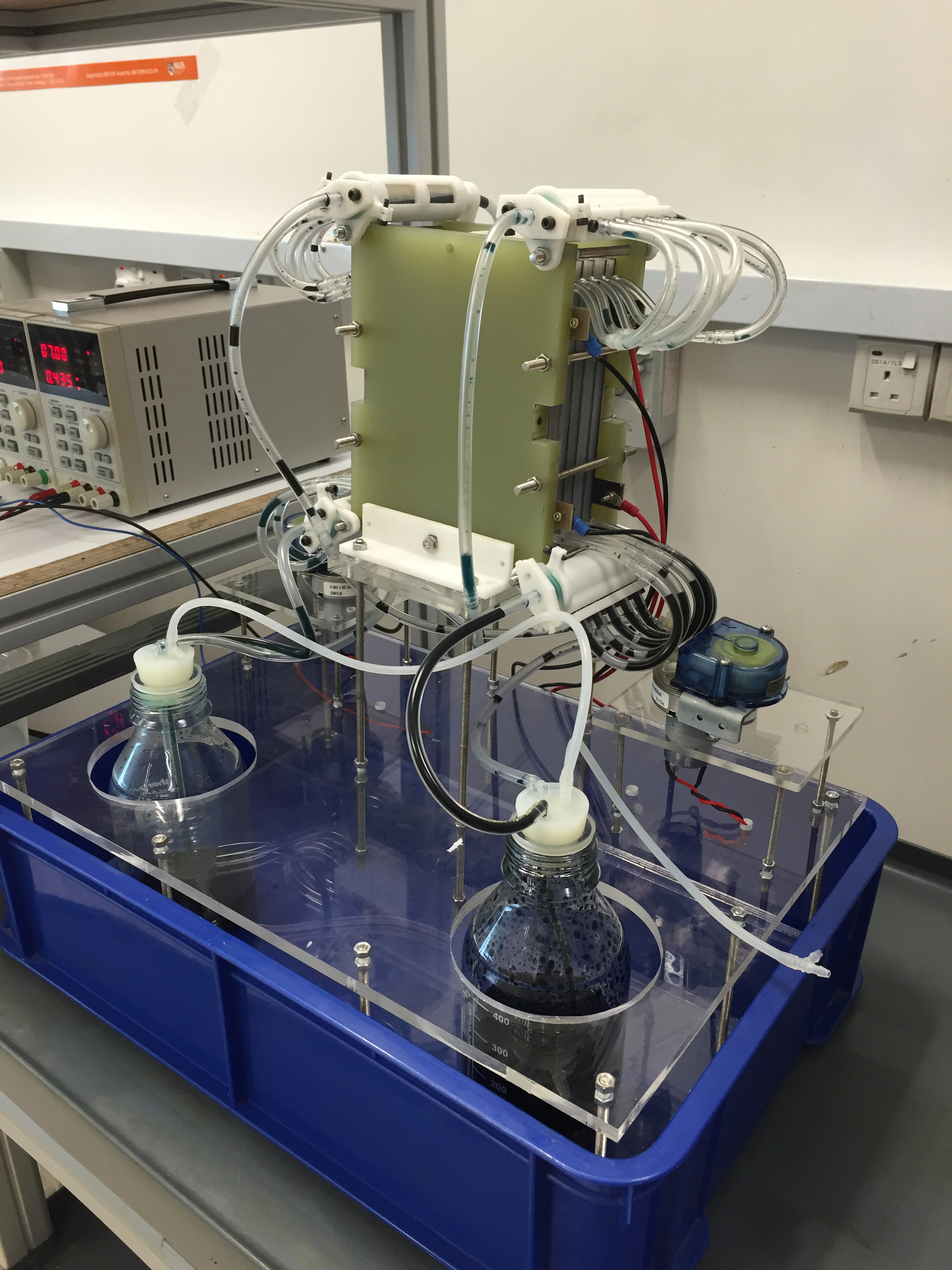Battery Tech Article
Modular Bipolar Plate for Redox Flow Battery

Technology Overview
With the wide deployment of renewable energy harvesting devices, such as solar cells and wind turbines, there is an urgency to develop high efficiency and economical energy storage systems to stabilize the intermittent and often unpredictable primary power sources before the power can be channelled to the grid safely or utilized for on-site loads. Redox flow batteries (RFBs) are regarded as promising electrochemical energy storage devices due to their special features of separable energy and power capacity. However, redox flow batteries tend to have lower energy densities than integrated cell architectures. Many approaches have been studied to improve the energy efficiency of RFBs. Among them, reducing shunt current loss and other parasitic loss is of great importance. This invention is capable of minimizing the shunt current in a redox flow battery through increasing the conductive path that exists between adjacent cells, without increasing maintenance cost or assembly complexity.
Technology Features & Specifications
This invention provides a new design for a bipolar plate module which comprises of a pair of carbon felts, a flow frame, an inset frame and a separator, as well as a monopolar plate module that is a modification of the said bipolar plate module. It further provides a redox flow battery stack that contains a stacking of single cells that are formed by a plurality of the said bipolar plate modules and a pairs of monopolar plate modular at both terminals. Two pairs of manifold sets with a plurality of channels are connected to the stack for conduct in and out the electrolytes.This new design provides an alternative way to solve the shunt current problem. The length of conductive path between adjacent single cells can be increased by increasing the length of the channels, without using complex internal serpentine structures. Extra flexibility to optimize the system performance and minimize shunt current is thus possible since it is convenient to adjust the length of the flow channels on the manifold sets according to specific operating conditions.
Potential Applications
The invented redox flow battery stack can be operated in different electrochemical cell system, such as all vanadium, vanadium/bromine, iron/chromium, bromine/polysulfide, lithium battery, depending on the electrolytes supplied to the first and second active reaction compartments.Some of the potential applications are: Energy storage applications from renewable energy sources Uninterruptible power supply (UPS) applications Independent power applications
Market Trends Opportunities
Benefits
The customer benefits of this modular bipolar plate design for redox flow battery includes better stack performance, low shunt current / parasitic current loss, low maintenance cost, robust sealing, and a simplified assembly process. Due to these advantages, the energy efficiency and cost effectiveness of the new designed system can be remarkably improved.
Key information
Technology Category- Energy - Battery & SuperCapacitor
ID Number: TO037286
Source: IPI Singapore
